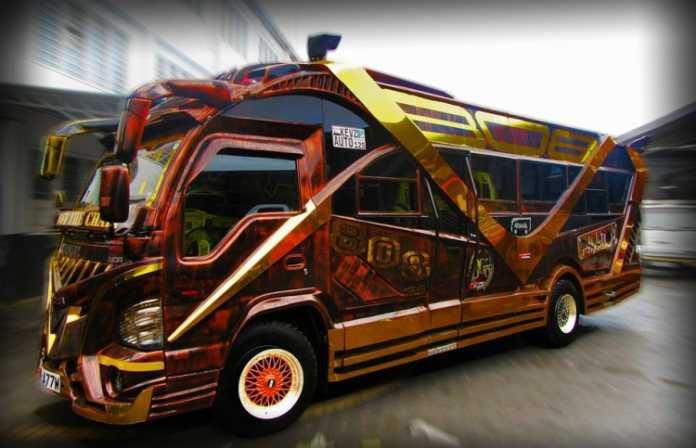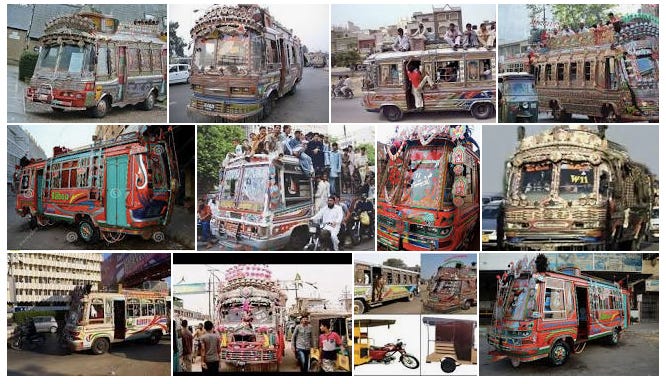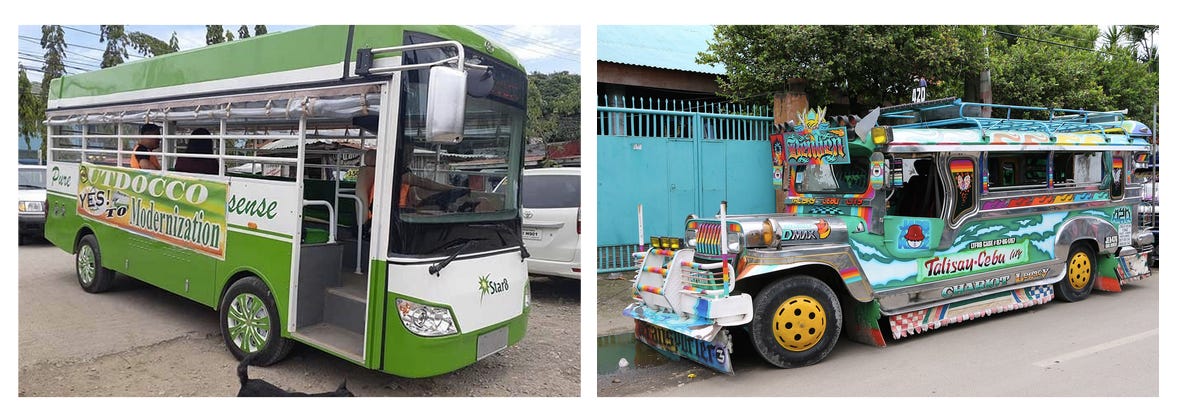Hey friend,
Here’s your every-other-week dose of informal transportation goodness.
If you’re new to Makeshift Mobility, welcome.
Did a mutal friend forward this to you? Thank them for me, please.
Why not sign up so you get it in your own inbox? I promise I won’t spam you and I’ll only pop up every two weeks.
Easy as pie to subscribe. Just click the green button.
My apologies for the tardiness. I usually send you this letter Wednesday mornings (my time) but this one got delayed. I stayed up late for workshop that landed between 10:30 pm and 1:00 am in my timezone.
I am still bleary-eyed and struggle to write coherent sentences. The perils of being middle-aged.
This coordinating time zones in the era of virtual meetings is also such a pain. Finding a time slot that’s reasonable for everyone across 4, 5 or even 6 zones is never easy.
Then again, how crazy would it be if we ever truly become a space faring race AND we broke the rules of physics AND invented faster-than-light real time communication?
“You think six time zones on the same planet is tough, you silly terran? Try scheduling six time zones on six different planets and a few other space stations!”
Ouch. But maybe AI will have to solve that for us.
What’s that?
You ask if we’ll still have informal transportation in space?
What?!?
Obviously the Millennium Falcon and Serenity are the matatus of interplanetary travel!
No? Well, some matatus certainly look like spaceships.

The award winning Golden Phantom Matatu serving the Ongata route in Nairobi. Photo from Naibuzz.com.
Sing a Song
In my last letter to you, I posted a link in the caption of the photo of a xe-lam, to a website that shared a little bit of the history of the (now-banned) Vietnamese three-wheeler vehicle. (Here’s a link to an English translation via google translate.)
The essay begins with the lyrics of a Vietnamese song from the 70s, “Lua Xe Lam Chieu” by composer Vinh Su. Google translates:
On a crowded car trip this afternoon.
Heard a lot of bitterness and bitterness
There is no place for a car ride where many
days dreaming of so many
personal memories you bring ...
The essay writer tells us it’s a wistful song about memories of meeting someone on the crowded xe-lam where “knees touch.”
Did you catch that the website isn’t about transportation. It’s about music.
Makeshift mobility is so integral to daily life in the cities that have them, of course people write songs about them.
Here’s Tukang Ojek by Tri Suaka. The song uses ojeks as a metaphor.
The lyrics of the refrain goes:
Nasibnya ojek di jalan, hujan becek tetep jalan
Walaupun banyak rintangan tetap ku terjang
Kadang tak ada orderan, semangatku takkan padam
Semoga rezeki kan diberikan Tuhan
Which, google again:
The fate of the motorcycle taxis on the road, the rain is still muddy
Even though there are many obstacles, I still lunge
Sometimes there are no orders, my spirit will never die
Hopefully sustenance will be given by God
I don’t know if google is translating it right but I like the melody. I also like the metaphor.
Makeshift mobility is about so much more than just moving people around in cities. It is also very much about shared memories, society and culture. And identity.
Paint a Picture
I mean look at how these indigenous, ingeniously adapted vehicles are bursting with identity and self-expression!

Images via google search for “minibus Karachi”
It would be an understatement if you called them ornate. Psychedelic is more like it.
Btw, this is part of a recognized folk-art genre called “Pakistani Truck Art.”
It has been an homegrown art-form in South Asia, especially in Pakistan, where the whole idea of decorating trucks (also, lorries and even rickshaws) with complex floral patterns and poetic calligraphy, has evolved in the most radiant and innovative manner.
Nadeem Paracha recounts how this art form emerged. Follow that link and enrich your life.
Take a Treat
If you want deeper insights and you’re looking for a book to read, go get Kenda Mutongi’s Matatu: A History of Popular Transportation in Nairobi. (Jackie Klopp recommended it to me. Thanks, Jackie!)
It is wonderfully written and a joy to read.
Mutongi tells the story of how and why the matatu emerged and how that history is so intertwined with Kenya’s colonial experience, Nairobi’s rapid urban growth, and East African pop-culture.
The same economic forces that produced the matatu also created gregarious art and music:
So, to lure passengers, matatu operators started to “trick out” their vehicles with blaring hip-hop and flamboyantly painted exteriors—from somber black to a Rubik’s-Cube assortment of colors, or with airbrushed creations normally reserved for movie posters or street murals. Each matatu had to be unique. Particularly popular were the names and portraits of American hip-hop artists like Kanye West, Eminem, Ludacris, Jay-Z, or Snoop Dogg; sometimes they promoted political figures—there were predictable portraits of Barack Obama, that most honored child of Kenya (in one such image he is kissing his wife, Michelle), but you might also encounter such political absurdities as George Bush sitting beside Osama bin Laden. Regardless, the transformation of the matatu was profound. Just a few generations earlier matatu owners had been repurposing used parts to assemble simple vehicles that could carry a few passengers; now, a few decades after independence, they were adorning large, top-of-the-line vans with personalized artwork and high-tech accessories.
And just like how it responds to and builds ecosystems of informal employment, makeshift mobility also creates communities of art and artists.
Check out the DJs who promote themselves via matatus.
Pick a look
Which is why I also get worried when governments create plans to modernize makeshift mobility that only center on vehicles. We do need to upgrade the vehicles and the systems but we need plans that acknowledge that informal transportation is also a vehicle for identity and culture. (Pun intended.)
Take a look at what the Philippines intends to replace the iconic jeepney:

Image on the left, the e-jeepney (from Sunstar.com.ph).
Image on the right, the traditional jeepney (from theculturetrip.com).
First, it’s a minibus. Second, it is boooooring.
I had a long conversation with my friend, Marian Pastor Roces about this.
Marian is a noted art critic, curator and author of Gathering: Political Writing on Art and Culture. She and I agreed that we need to improve transportation, to make it more efficient, but that we also need to make the new jeepneys beautiful and expressive.
I can imagine a future city that has efficient formal and informal transportation that work together seamlessly. Formal transport can keep it’s introverted, staid, modernist, corporate chic. Informal transport can continue be extroverted, and can celebrate culture and expression. To literally be moving canvases.
You know, of course, that innovation and art are deeply intertwined.
The expressions of identity and culture come from the same well of ingenuity that adapted those vehicles in the first place.
TIL Speed Round
OK, some quick news to wrap-up.
Ekiti State in Southwest Nigeria is requiring okadas and kekes to join Max.ng, a ridehail company. Is this a better approach than Lagos State’s ouright ban? Is this the harbinger of governments turning over the management of informal transportation to tech companies?
Did you know that Hong Kong also has informal transportation? Sort of.
There are Public Light Buses: the green minibuses (permitted, fixed routes), and the red minibuses (permitted, opportunistic routes). The city is just about to award a contract to outfit the green minibuses with vehicle location systems that will integrate with MTR’s systems. The red minibuses aren’t doing so well.
I learned from Venkatesh Prasad that auto rickshaw drivers in India are using Whatsapp to find customers. They are using the messaging platform to by-pass the ride hail apps and keep more of their income. (No link yet, sorry.)
This is an exciting adaptation, and of course perfectly in character for the endlessly innovative, always improvising denizens of makeshift mobility.
Word of caution though, the government is watching. They don’t care about the transportation, but they care about the politics.
You win a prize
I told you to read the article about the history of Pakistani Truck Art right?
Did you read it?
Because here’s a pop quiz:
Tell me who started signing their art with “Kafeel Bhai Ghotki Wally — Right Arm Left Arm Spin Bowler” and why?
First one to give the right answer in the comments gets a digital copy of Kenda Mutongi’s Matatu: A History of Popular Transportation in Nairobi. On me.
That’s it for this week. As always, if you enjoyed this, please share.
Meanwhile, stay safe and keep innovating.
I’m Benjie de la Peña, a transport geek and urban nerd. I live in Seattle, a city that could use some of the gregariousness of Truck Art to balance out all that gray.
I think a lot about strategic design, institutional shifts, and innovation.
I believe makeshift mobility could be the single greatest lever to decarbonize the urban transport sector—but only if we can organize.
If I had my druthers, the world would have a international, inter-city think tank dedicated to improving informal transportation.



